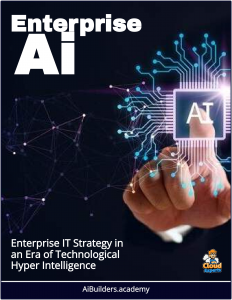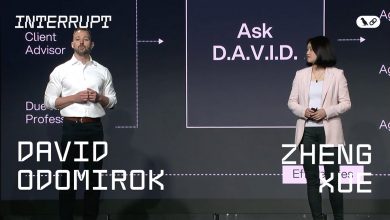A Leader’s Guide: How to Go from Idea to Value with Generative AI
Generative AI is not a plug-and-play solution; it’s a catalyst that demands vision, rigor, and resilience.
 In an era where innovation is the currency of progress, generative AI stands as a transformative force, poised to redefine how businesses create value.
In an era where innovation is the currency of progress, generative AI stands as a transformative force, poised to redefine how businesses create value.
From crafting personalized customer experiences to accelerating product development, this technology offers leaders a powerful tool to turn abstract ideas into tangible outcomes.
Yet, the journey from concept to value is not automatic—it demands a deliberate, strategic approach. As a leader, how do you harness generative AI to bridge the gap between inspiration and impact? This guide explores the critical steps to unlock its potential while navigating the challenges that lie ahead.
Step 1: Define the Value Proposition
The first task is clarity. Generative AI—capable of producing text, images, code, and more—can feel like a solution in search of a problem. Without a sharp focus, it risks becoming a shiny distraction. Start by identifying the specific value you aim to deliver. Are you looking to streamline operations, enhance creativity, or solve a customer pain point? For example, a marketing leader might use generative AI to craft hyper-targeted campaigns in hours rather than weeks, while a product manager could generate design prototypes to accelerate iteration cycles.
The key is to anchor your idea in a measurable outcome—cost reduction, revenue growth, or improved user satisfaction. This clarity not only guides your team but also ensures that AI serves as a means to an end, not an end in itself.
 Featured Thought Leader: Tom Godden
Featured Thought Leader: Tom Godden
In the featured video Tom Godden, Director of Enterprise Strategy at AWS, presents a comprehensive guide for leaders to harness the power of generative AI. Godden outlines a six-step framework for organizations to move from idea to value: Learn, Build, Establish Data Strategy, Lead People, Act Responsibly, and Get Started.
He emphasizes the importance of scaling AI initiatives effectively, choosing the right models, and leveraging data as a differentiator. Godden also addresses the critical aspects of upskilling employees, fostering an AI-driven culture, and implementing responsible AI practices.
The presentation provides practical advice for executives to navigate the challenges and opportunities presented by generative AI, urging leaders to embrace this transformative technology while managing associated risks.
Step 2: Build the Right Foundation
Generative AI thrives on data and infrastructure. Before leaping into implementation, assess your organization’s readiness. Do you have access to high-quality, relevant data to train or fine-tune models? Are your systems equipped to integrate AI outputs seamlessly? A retailer, for instance, might need customer purchase histories and preferences to generate personalized product recommendations effectively.
Equally important is the human foundation. Upskill your team to work alongside AI, blending technical expertise with domain knowledge. This hybrid capability—where humans set the vision and AI amplifies execution—is where the magic happens. Without this groundwork, even the best ideas falter.
Step 3: Prototype with Purpose
Ideas gain traction through experimentation. Generative AI’s strength lies in its ability to produce rapid, iterable outputs, making it ideal for prototyping. Take a hypothesis—say, using AI to draft legal contracts—and test it in a controlled environment. Start small: generate a single contract, evaluate its accuracy, and gather feedback from stakeholders.
This phase is about learning, not perfection. Expect flaws—AI might misinterpret nuances or overgeneralize—but use these insights to refine your approach. The goal is to de-risk the idea, proving its feasibility before scaling. A tech firm, for example, might pilot AI-generated code snippets, ensuring they meet quality standards before integrating them into production workflows.
Step 4: Scale with Discipline
Once validated, the transition from prototype to value hinges on disciplined scaling. This means embedding generative AI into existing processes without disrupting them. Automation is your ally here—connect AI outputs to downstream systems, like feeding generated content directly into a CRM or design pipeline. But scale thoughtfully: monitor performance metrics, such as time saved or error rates, to ensure value accrues as intended.
Leadership plays a pivotal role at this stage. Communicate the “why” behind the shift to your team, addressing fears of job displacement with a vision of empowerment. Generative AI should augment human ingenuity, not replace it—a message that builds trust and adoption.
Step 5: Navigate the Ethical Minefield
Value isn’t just financial; it’s reputational. Generative AI raises thorny questions: How do you ensure fairness in AI-generated decisions? What about copyright when AI remixes existing content? Leaders must proactively address these risks. Establish guardrails—transparent policies on data use, bias audits, and accountability mechanisms—to mitigate pitfalls.
Consider a media company using AI to write articles. If the output inadvertently plagiarizes or spreads misinformation, the backlash could outweigh any efficiency gains. Ethical foresight preserves long-term value, turning a potential liability into a competitive edge.
Step 6: Measure, Iterate, and Evolve
The journey doesn’t end with deployment. Generative AI is dynamic—its capabilities evolve, as do your business needs. Continuously measure its impact against your initial value proposition. Are you hitting your targets? Where are the gaps? Use these insights to iterate, tweaking prompts, retraining models, or exploring new use cases.
Think of AI as a living asset. A logistics firm might start with AI-optimized delivery routes, then expand to predictive maintenance as data accumulates. This adaptability keeps your organization ahead of the curve, extracting ever-greater value from the same technology.
The Leadership Imperative
Generative AI is not a plug-and-play solution; it’s a catalyst that demands vision, rigor, and resilience. As a leader, your role is to steer this journey—connecting the dots between an idea’s spark and its real-world payoff. The organizations that succeed will be those that move beyond experimentation to execution, balancing ambition with pragmatism.
Reflect on this: What idea in your domain could generative AI bring to life? The technology is ready—its value lies in your hands. By defining the goal, building the foundation, and iterating relentlessly, you can transform a fleeting thought into a lasting legacy. In a world racing toward the future, that’s the mark of true leadership.



